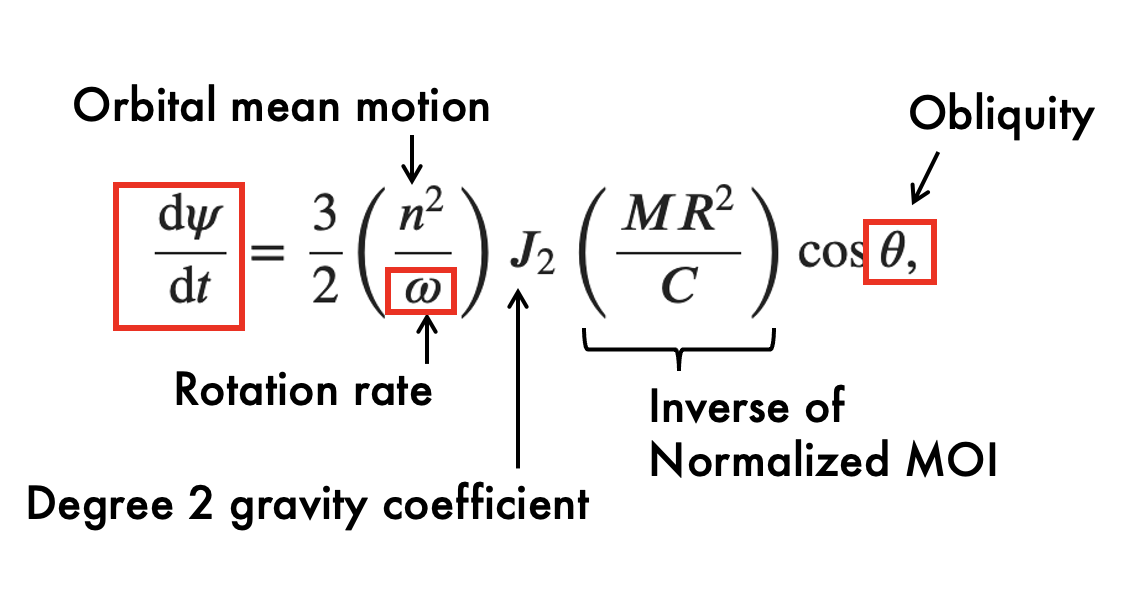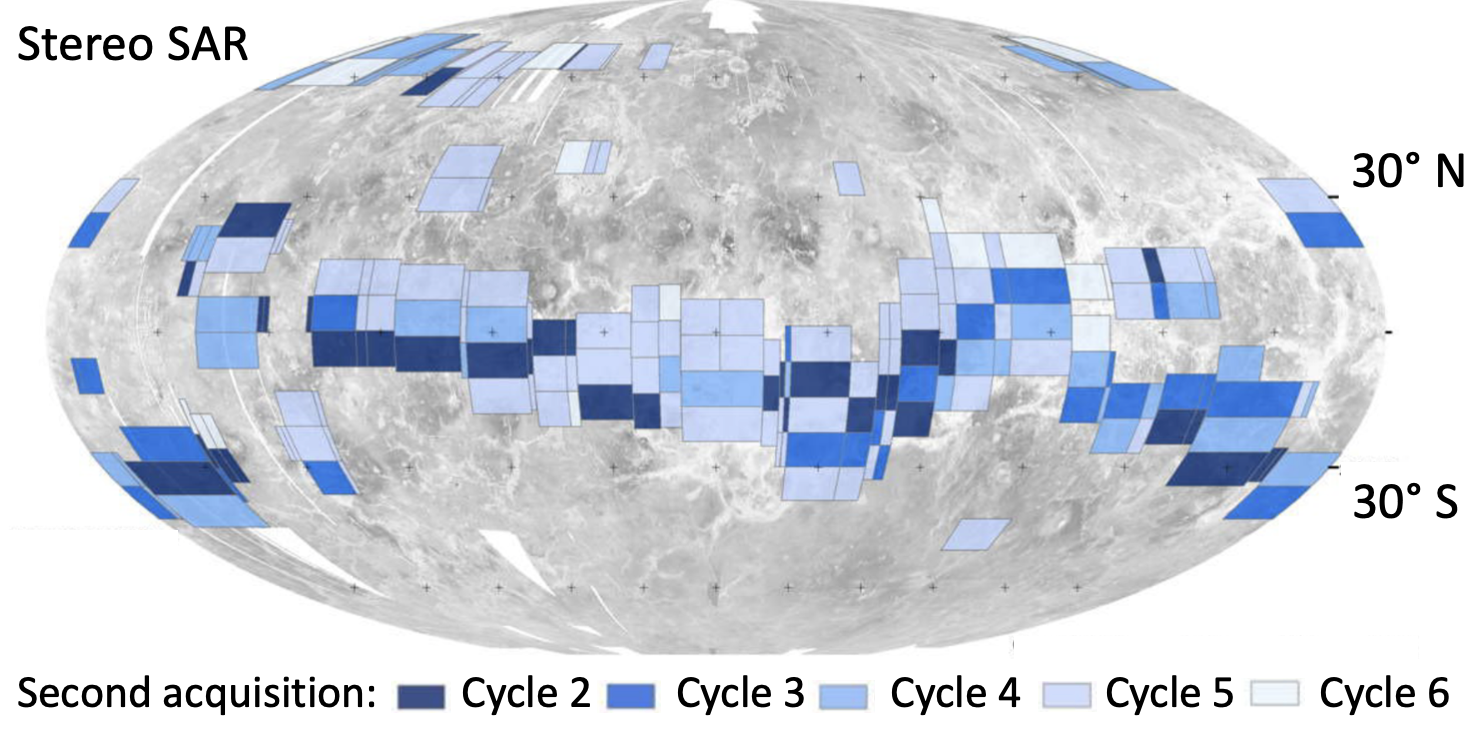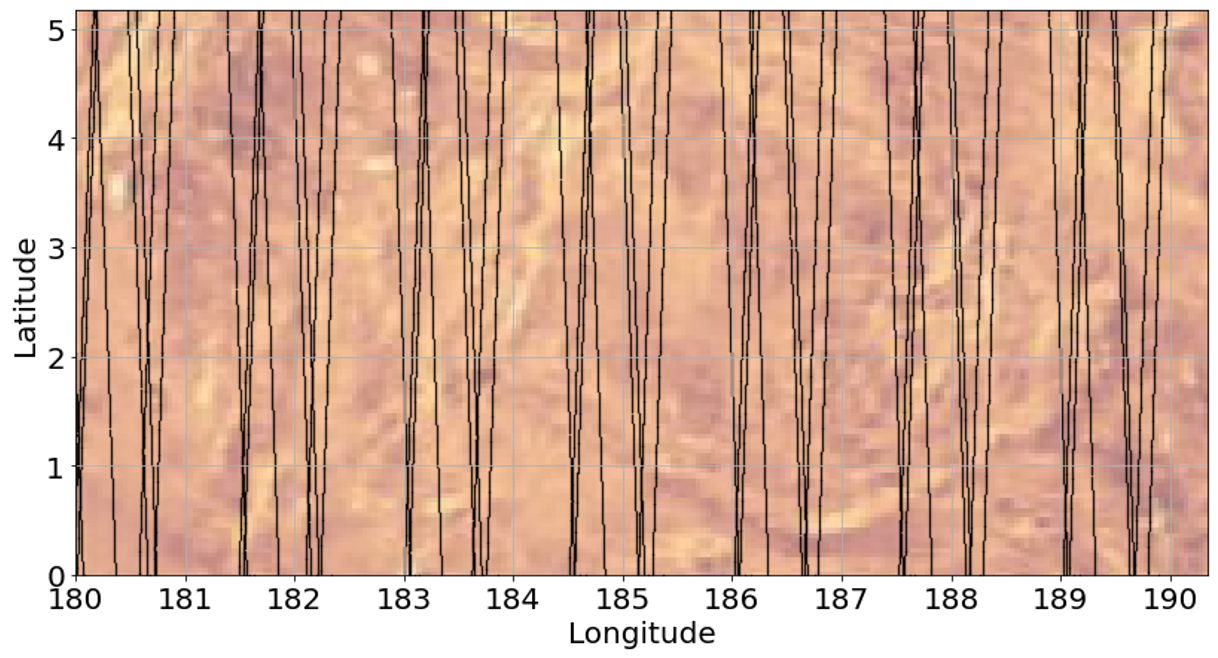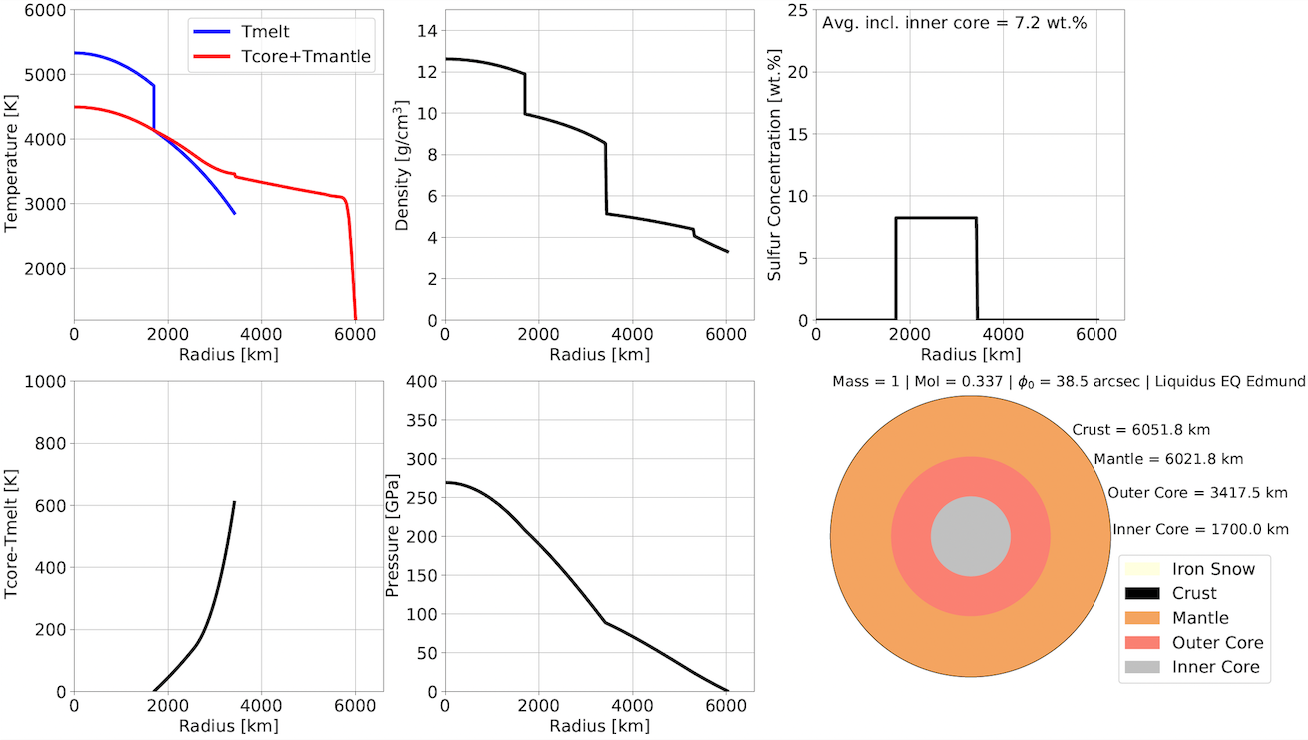- 1Jet Propulsion Laboratory, California Institute of Technology, Pasadena, USA (gregor.b.steinbruegge@jpl.nasa.gov)
- 2University of North Carolina at Chapel Hill, Chapel Hill, USA
- 3Department of Geosciences, Virginia Tech, Blacksburg, USA
- 4Department of Earth Science & Engineering, Imperial College London, London, United Kingdom
- 5Lunar and Planetary Laboratory, University of Arizona, Tucons, USA
Introduction: One of the science priorities of the EnVision mission is to infer the interior structure of Venus, including the properties and thicknesses of its crust, mantle, and core [1]. Measurements of the moment of inertia and length-of-day variations provide critical geodetic constraints to understand the bulk interior structure of the planet. The polar moment of inertia of Venus is inversely proportional to the precession rate.

Measuring the precession rate directly from orbit is challenging. For Magellan, spacecraft ephemeris errors dominated the measurement errors and for EnVision very similar challenges are expected. The precession rate itself depends on a number of geodetic parameters, namely the orbital mean motion, the spin rate, the second-degree gravity coefficient, the total mass of the planet, the radius, and the obliquity. To constrain the inertia tensor of Venus and hence to meet the EnVision objectives, the gravity field information must be complemented by measurements of the rotational state. Therefore, augmenting the gravity science solution with surface feature tracking and/or altimetry – abilities that VenSAR offers – can be critical in achieving EnVision science objectives. VenSAR has the capability to make use of globally distributed VenSAR altimetry data and ground-track intersections (cross-over points) to create a dense geodetic net. These observations can be used in concert with gravity observations and SAR images (Figure 1) to improve the a posteriori orbit determination, to solve for the rotation state of Venus including spin axis orientation and precession, and to allow the co-registration of other data products generated by the EnVision mission via improving the overall reference frame of Venus. The precise measurement of the rotation state allows us to infer constraints on the interior structure (e.g., by inferring the moment of inertia) as has been recently demonstrated by ground-based radar observations [2]. However, these recent measurements still provide a weak constraint on the internal density profile and core size, and improved measurements (reducing the uncertainty in the moment of inertia from currently 7% to about 4% and a measurement of the tidal Love number k2) are needed to quantify the interior structure of Venus with precision [3].

Figure 1: Second acquisition for VenSAR stereo at each Region of Interest (RoI). Adapted from [1].
Methods: As outlined in the ESA red book, in addition to stereo SAR data, VenSAR will acquire a global network of altimetry mode tracks with a vertical resolution of 2.5 m, potentially providing a far better constraint than any previous dataset. The aim of this work is to establish the link between VenSAR and EnVision’s geodetic measurements and the interior structure of Venus. We analyzed the currently planned EnVision orbit and operational profile, identifying regions with repeated coverage, and altimetry intersections. For the interior models, we adapted previous Mercury interior models [4] to Venus, updated with convective thermal profiles for Venus’ mantle. Two sets of models consistent with different geodetic constraints are generated. One set with an inner core, and one without. The set of inner core models is controlled by the inner core radius as a free parameter, in absence of the inner core, the temperature above the melting point is iterated.

Figure 2: Zoomed in view on VenSAR altimetry groundtrack spacing and intersections.
Results: The ML007 tour has been analyzed, showing promising spatial and temporal coverage. A zoomed in view on the altimetry groundtracks is shown in Figure 3. Further, an initial set of interior models has been assembled for future investigation. An example model without inner core is shown in Figure 4. For the set of forward computed models, we further computed the tidal Love numbers for different mantle rheologies.

Figure 3: Example model of Venus interior structure for a model with an inner core.
Outlook: Future work we will use the tour analysis of EnVision and the estimated performance of VenSAR to infer the accuracy of the geodetic constraints from VenSAR. These constraints can then be combined with our interior models to refine the expected constraints on Venus interior structure. The assembled framework will help optimizing operation scenarios and to maximize the science return of the EnVision mission.
References: [1] ESA (2024). EnVision Definition Study Report (Red Book). [2] Margot, J.-L., et al. (2021). Spin state and moment of inertia of venus. Nature Astronomy, 5(7):676–683. [3] Cascioli, et al. (2021). The determination of the rotational state and interior structure of Venus with VERITAS. PSJ, 2(6):220. [4] Steinbrügge et al. 2021, Challenges on Mercury's interior structure posed by the new measurements of its obliquity and tides, GRL, 48;3.
Acknowledgements: A portion of this research was carried out at the Jet Propulsion Laboratory, California Institute of Technology, under a contract with the National Aeronautics and Space Administration (80NM0018D0004). This work was supported by NASA’s VENSAR program Grant NNH21ZDA001.
How to cite: Steinbruegge, G., Dunnigan, A., King, S., Mason, P., Hensley, S., and Carter, L.: Geodetic Contributions of the VenSAR Instrument for Inferring the Interior Structure of Venus, Europlanet Science Congress 2024, Berlin, Germany, 8–13 Sep 2024, EPSC2024-686, https://doi.org/10.5194/epsc2024-686, 2024.